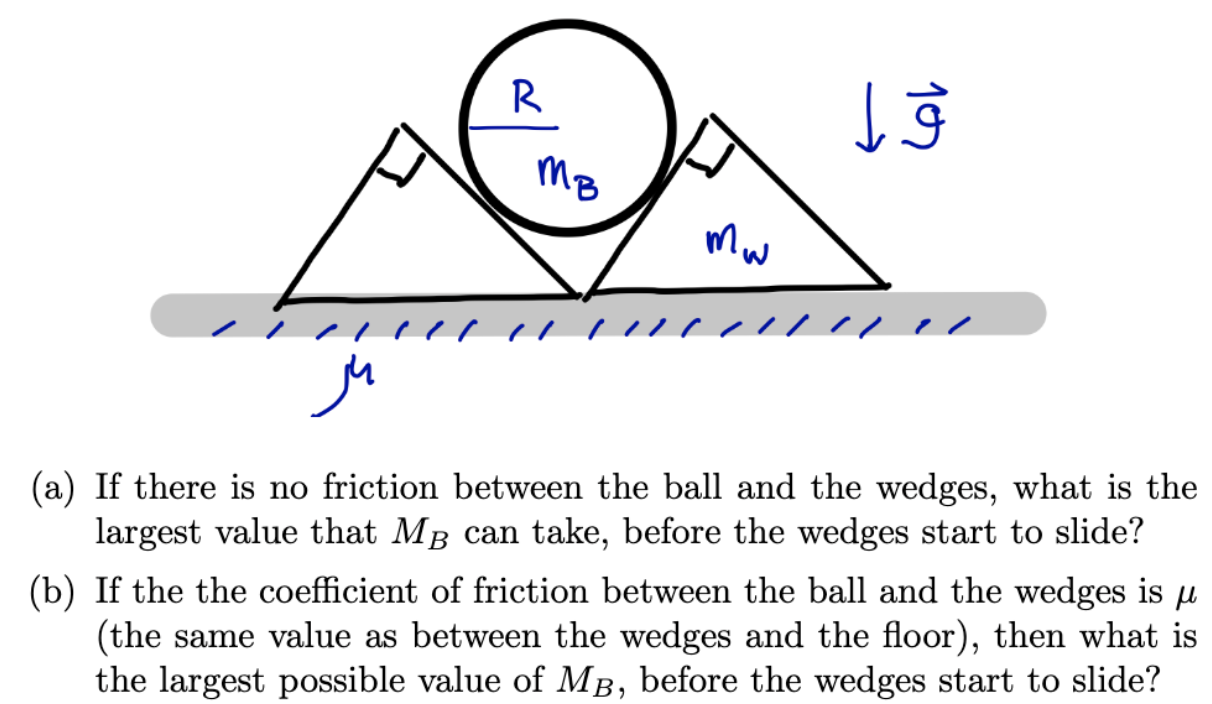Home /
Expert Answers /
Physics /
a-ball-of-mass-m-b-and-radius-r-rests-between-two-wedges-each-of-mass-m-w-a-pa693
(Solved): A ball of mass \( M_{B} \) and radius \( R \) rests between two wedges each of mass \( m_{W} \), a ...
A ball of mass \( M_{B} \) and radius \( R \) rests between two wedges each of mass \( m_{W} \), as shown. The wedges are isosceles right triangles, so the angles at the bottom are \( \frac{\pi}{4} \). There is a coefficient of static friction, \( \mu \) (with \( 0<\mu<1) \), between the ground and the wedges.
(a) If there is no friction between the ball and the wedges, what is the largest value that \( M_{B} \) can take, before the wedges start to slide? (b) If the the coefficient of friction between the ball and the wedges is \( \mu \) (the same value as between the wedges and the floor), then what is the largest possible value of \( M_{B} \), before the wedges start to slide?

